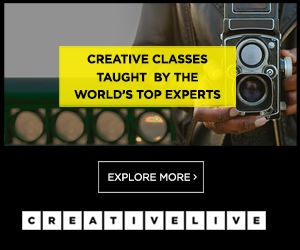Mayo Healthcare and Social Media Summit: Interview with Colleen Young, Community Director for Mayo Clinic Connect’s Online Patient Community
First published November 10, 2016
Colleen Young (@colleen_young on Twitter) is the Community Director of Mayo Clinic Connect, an online community for patients and their loved ones to connect with others experiencing illness. Mayo Clinic Connect is a unique platform that also educates users about their conditions, and has regular input fromMayo Clinic doctors and other healthcare professionals.
Colleen is also the founder of Health Care Social Media Canada (@hcsma or #hcsma on Twitter). She has conducted extensive academic research into the potential of social media to help along a patient’s journey through illness. She kindly took time to answer questions about her experiences in the lead-up to the Mayo Healthcare and Social Media Summit in Melbourne, where she’ll be speaking next week.
Colleen Young, Community Director of Mayo Clinic Connect. Pic courtesy of Colleen Young.
How has social media transformed healthcare?
The connectivity that the social web has afforded people is the single biggest innovation in healthcare.
It’s taken away the terminal illness of isolation, brought people together so they can learn, recognise their knowledge and share with others. This is true for providers, policy makers, researchers, educators as well as patients and family caregivers.
What’s the biggest advice you would give healthcare startup founders or clinicians who want to build a community for their patients or users?
Technology alone does not create community. To effectively connect people, foster discussions that build relationships and create circles of trust requires a human commitment. Many recognise the potential of online communities to affect change, such as provide support and reduce isolation, improve health, change a health behaviour or to even drive research or change policies. But behind every successful community is a leader or team of people that helps nurture the community and to constantly calibrate the fine balance between growth, activity and sense of community.
Mayo Clinic Connect. Pic courtesy of Mayo Clinic and Colleen Young
How can the risk of misinformation amongst patient communities be reduced? What are your thoughts on the best ways to moderate patient communities within hospitals, clinics, private Facebook groups or healthtech apps?
Many health organisations are concerned about disclosure of personal health or other sensitive information and the proliferation of misinformation. However, if your community has clear policies, proactive community management, as well as active moderation and community participation, these concerns are largely unfounded for online communities. Clearly stated policies make it easy for moderators to modify—and in some cases remove—posts that contravene terms of use, such as commercial postings, advertisements, or impersonations; posts that relate to illegal activity; those that contain disrespectful language, and so on.
Community managers, moderators, and core members model behaviour and can guide members who may have unwittingly shared sensitive information or misinformation. Such modelling establishes and maintains the desired tone of a community. Communities with a secure sense of community can rely on responsive self-policing to correct misguided behaviour and misinformation. In fact, rather than removing misguided information, allowing and enabling community members to correct misconceptions and provide balanced debate can be a very productive bonding opportunity that deepens the sense of community and establishes the value of collective knowledge. Undesirable behaviour does happen in online communities, but responsive community management can maintain the integrity, reliability, and value of the collective community knowledge. (Colleen has written more about this at her website.)
How comfortable were your clinical colleagues initially when Connect launched, and what helped to make them feel more at ease with patient Connect communities if there was unease?
Mayo Clinic has long been a leader in the use of social media. Connect was an extension of our social media presence. Clinicians and staff have readily embraced the patient-to-patient exchanges and strength of the community on Connect which underlines a core value at Mayo Clinic – patients are knowledgeable and participatory members of their health care and well being.
Connect presents a unique opportunity for clinicians to be invited into the patient conversations. All provider participation whether it be in the group discussions, webinars or blog pages, is done in concert with the patients.
Hear Colleen speak at the Mayo Healthcare and Social Media Summit in Melbourne, Australia next week. Tickets are available here.
We also interviewed Simon Pase, Video Producer at the Royal Children’s Hospital, Melbourne, who will also speak at the Summit.
We’re grateful to have been granted media access to the Summit.













